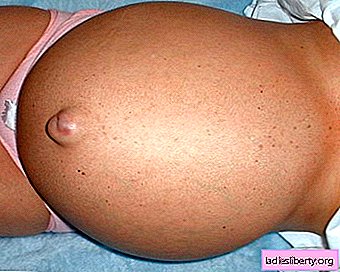
Ascites is a disease in which excess fluid accumulates in the abdominal cavity. Ascites is successfully treated, so if you experience symptoms of this disease, you should definitely consult a doctor.
Ascites - causes
Most often, ascites can be caused by increased pressure in the portal vein, which can lead to liver diseases (alcoholic hepatitis, cirrhosis), thrombosis, compression of the branches of the portal vein or trunk, and congestive heart failure. Sometimes ascites is one of the indicators of alimentary dystrophy, a common edematous syndrome in various kidney diseases or occurs as a result of damage to the abdominal cavity (tuberculosis, cancer, etc.).
Ascites causes increased intra-abdominal pressure and displacement of the diaphragm into the chest cavity. In turn, disorders of the abdominal organs occur, respiratory movements of the lungs deteriorate, blood flow resistance increases and cardiac activity is impaired.
In some cases, ascites progresses quite quickly (with cancer of the peritoneum or liver, with portal vein thrombosis), and in others it is not noticeable for several months (cirrhosis).
Ascites - Symptoms
A symptom of ascites is the presence of at least one liter of fluid in the abdominal cavity. On examination, an increase in the abdomen is noticeable, and when standing upright, it looks saggy, belly button protrusion is often found; in a horizontal position, the patient’s stomach is flattened, and the lateral parts swell. In the case of progressive portal hypertension on the abdomen, an enlarged venous network can be seen in which the collaterals are placed around the navel and in the form of rays depart from it, forming a typical figure.
Ascites - diagnosis
In the diagnosis of ascites, it is very important to determine the underlying disease, if it was detected before ascites. In systemic diseases, in addition to ascites, peripheral edema is noticeable, congestion in the lungs is pronounced; with liver damage or diseases of other organs of the peritoneum, ascites is mainly a disproportionate peripheral or isolated edema.
Quite often, in the case of cirrhosis of the liver with prominent portal hypertension, ascites may be accompanied by bleeding from the varicose veins of the esophagus. In heart failure, in addition to ascites, edema appears on the feet and legs, rhythm disturbances on the ECG and symptoms of myocardial damage. If renal failure occurs, then ascites is accompanied by edema of the subcutaneous tissue and skin. Of great importance is the puncture of the abdominal cavity with further studies of ascitic fluid in the laboratory.
Ascites - treatment
Treatment for ascites is focused on the underlying disease. They also carry out activities that help reduce portal hypertension and restore water-salt metabolism, use aldosterone antagonists, diuretics. If drug therapy is not effective, and ascites will worsen, the patient should be prescribed inpatient treatment, where he will undergo an abdominal puncture if necessary.
This procedure is carried out in the patient’s sitting position (with any complications of the patient, they are laid on their side) after the bladder is completely emptied in compliance with the rules of antiseptics and asepsis. After local anesthesia, a trocar is punctured along the midline of the abdomen, which connects the navel to the so-called iliac crest or between the navel and the pubis. In this case, the liquid must be released slowly (due to a possible collapse) and basically no more than six liters per puncture.
Repeated punctures can cause the omentum or guts to merge with the front wall of the abdomen or lead to inflammation of the abdominal cavity, which in turn creates the risk of severe complications during further punctures.











